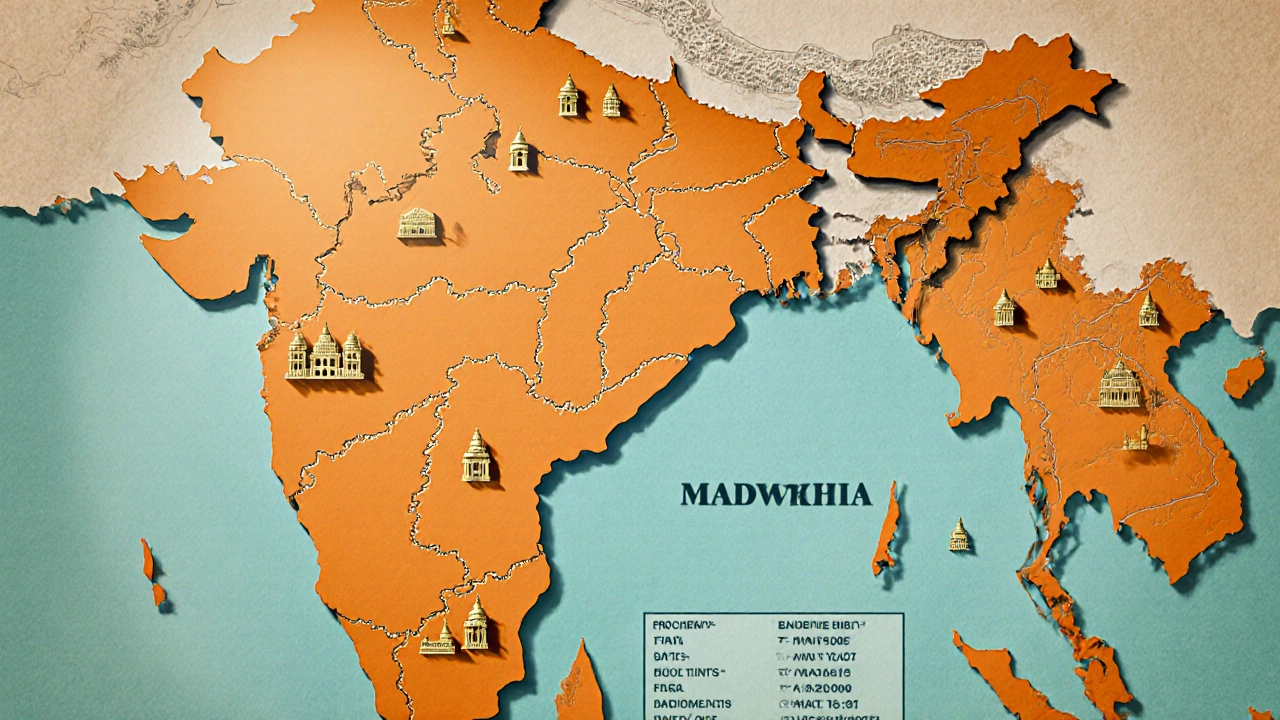
Madhya Pradesh leads India with over 1,500 protected heritage sites, outpacing Uttar Pradesh and Rajasthan. Discover counts, top monuments, travel routes and preservation tips.
When talking about Indian heritage tourism, the practice of traveling to experience India’s historic, artistic, and spiritual landmarks. Also known as heritage travel, it blends sightseeing with learning about the people and events that shaped the subcontinent. Cultural tourism, visits focused on arts, customs, and everyday life of local communities is a core component, because you can’t truly grasp a monument without feeling the surrounding culture. Likewise, UNESCO World Heritage Sites, places recognized for their universal cultural or natural importance act as anchor points; they draw millions and shape travel itineraries across the country. Together these elements create a rich tapestry where history isn’t just read in a guidebook, but lived on the streets of Varanasi, the forts of Rajasthan, and the temples of South India.
If you’re planning a trip, think of pilgrimage tourism, travel to sacred sites for religious or spiritual reasons as the spiritual backbone of many heritage routes. Sites like Varanasi, the world’s oldest continuously inhabited city, and the Char Dham circuit in the Himalayas illustrate how faith and history intertwine. Ancient Indian cities, urban centers that have survived for millennia, such as Ujjain, Madurai, and Varanasi provide the backdrop for these pilgrimages, offering layers of mythology, architecture, and everyday life. Historic monuments—think the Taj Mahal, Jaipur’s Amber Fort, or Hampi’s ruins—are the visual anchors that turn a simple visit into a deep‑dive into empire building, art, and engineering. The interplay between these monuments and their surrounding festivals, local cuisines, and craft traditions turns each trip into a living lesson, not a static museum walk.
Understanding the practical side is just as important. Seasonal timing, safety tips, and cost planning all influence how you experience heritage travel. For instance, visiting the Taj Mahal in the cooler months reduces crowds and heat stress, while exploring hill‑top temples during monsoon season can be risky. Articles in this collection cover everything from the most affordable months for US citizens, to malaria‑prevention advice for certain regions, and even niche insights like the best routes for a luxury sleeper train that lets you soak up the countryside between heritage stops. By tying together cultural context, pilgrimage significance, and logistical know‑how, you’ll be ready to design a journey that respects both the past and your own comfort. Below you’ll find a curated set of guides that flesh out each of these themes, giving you actionable tips, safety checks, and insider tricks to make the most of India’s unparalleled heritage landscape.

Madhya Pradesh leads India with over 1,500 protected heritage sites, outpacing Uttar Pradesh and Rajasthan. Discover counts, top monuments, travel routes and preservation tips.